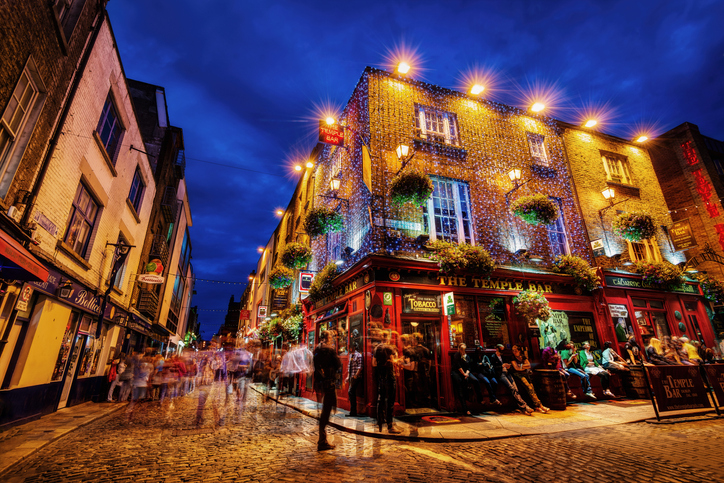Black beer, legends and historical traditions come together in this city whose omnipresent color is green
Dublin is a relatively easy city to get around in, full of life and good vibes that’s worth visiting even if it’s just for a weekend break.
The Irish capital has all the charm of a small town, but yet has all the cultural and shopping attractions of a big city.
The city centre is bordered by O’Connell Street and St. Stephens Green Park and the River Liffey divides the north and south side of the city.
The Spire of Dublin, also known as the Monument of Light, is located on O’Connell Street on the northside of the old city and is the world’s tallest sculpture. This large 120-metre stainless steel monument is quite controversial as some people love it and others think it’s an eyesore. Just a few minutes’ walk from the capital’s main thoroughfare you’ll find the National Leprechaun Museum.
Leprechauns are part of the Irish mythology. The guides will tell you about these little mischief-makers were shoemakers for the fairy folk and other Celtic legends as you visit the different rooms in the museum.

St. Stephens Green, on the southside,is a public park just above Grafton Street, which is one of the main shopping streets in the centre of the city.
In this part of the city, you can see the well-known statue of Molly Malone, the star behind the Dublin’s unofficial anthem. People believe that touching Molly Malone’s breast will bring them good luck. Well, it’s always good to attract good luck, right. St. Stephens Green is just a stone’s throw from the statue and is a great place for locals and tourist to relax and unwind in the city centre.

Christ Church and the Gothic-style St’ Patrick’s Cathedral are sure to impress lovers of architecture.
Half an hour’s walk from the centre is one of the most requested visits by tourists, the Guinness Storehouse. This seven-storey building allows you to explore the story behind Ireland’s most iconic beer. Enjoy the guided tour, two tastings and the famous rooftop Gravity Bar.
Another inebriating visit is the Old Jameson Distillery. Ireland was the first country to distil whisky, which in Gaelic means ‘uisce beatha’ (the water of life), and is a drink closely linked to Irish culture. Pop in for a tour to learn about the manufacturing process and the history of the brand, and of course, a tasting.
One of Dublin’s landmarks is the Ha’penny Bridge, which is made from cast iron and crosses the River Liffey. The name comes from the ha’penny toll extracted from anyone crossing the bridge originally.
Trinity College Dublin is another iconic spot and one of the most visited places in the city. Founded in 1592, it’s Ireland’s oldest surviving university. The library is home to one of the country’s most famous books, the Book of Kells, an ancient illuminated manuscript created by the monks in the Columban monastery in Kells.

The Long Room in the library is also the inspiration for Hogwarts Library in the Harry Potter series.
No visit to Dublin would be complete without visiting some of the city’s lively pubs. Temple Bar on the southside of the River Liffey, is the city’s cultural quarter and tourist destination and also home to the legendary Temple Bar Pub, which opened in 1840 and prides itself on Ireland’s largest whisky collection, serving no less than 450 whiskies.
One of the most recommend spots if you’re travelling with kids is Dublinia, which is free with the Dublin Pass. The living history allows you to travel back in Viking and medieval times to see what the city was like onboard a Viking warship or walk along a bustling medieval street.







